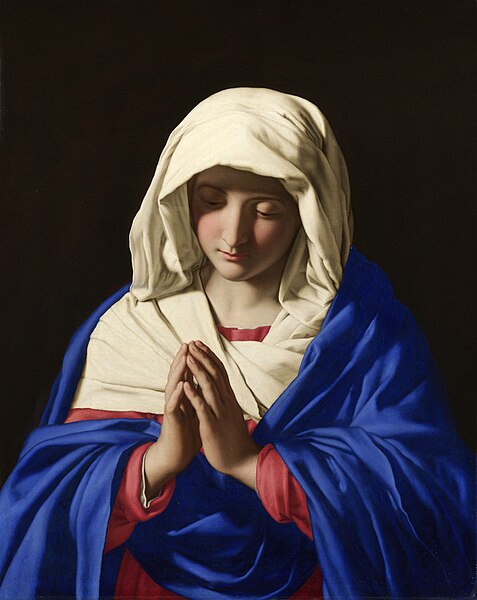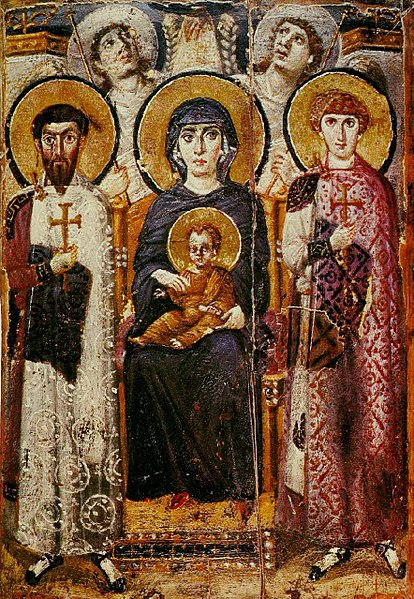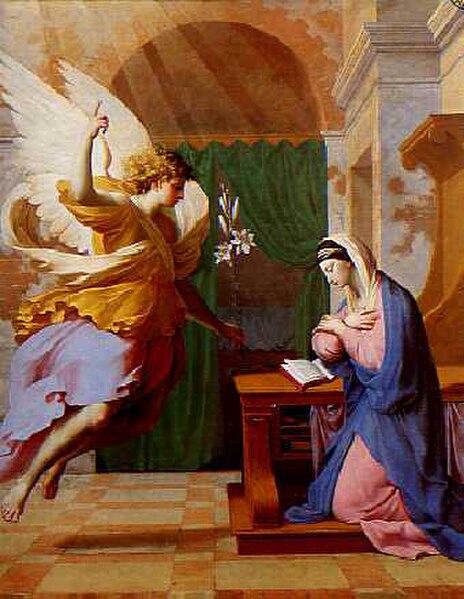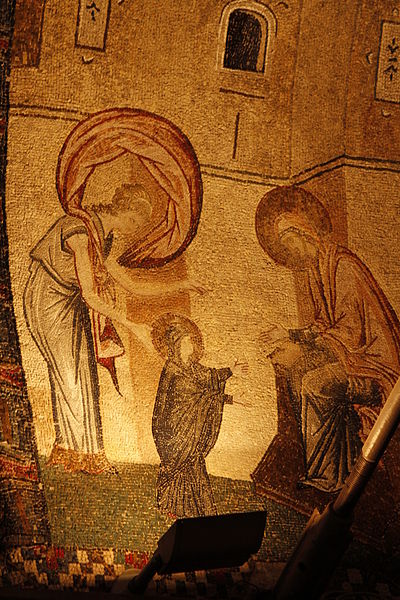Veneration of Mary in the Catholic Church
The veneration of Mary in the Catholic Church encompasses various devotions which include prayer, pious acts, visual arts, poetry, and music devoted to her. Popes have encouraged it, while also taking steps to reform some manifestations of it. The Holy See has insisted on the importance of distinguishing "true from false devotion, and authentic doctrine from its deformations by excess or defect". There are significantly more titles, feasts, and venerative Marian practices among Roman Catholics than in other Western Christian traditions. The term hyperdulia indicates the special veneration due to Mary, greater than the ordinary dulia for other saints, but utterly unlike the latria due only to God.
Veneration of Mary in the Catholic Church
The Virgin Mary from the Ghent Altarpiece, 1432
The Virgin of Mercy protecting a group of nuns under her mantle. Sano di Pietro, 15th century.
Miguel Hidalgo's 1810 Guadalupan flag
Mary was a first-century Jewish woman of Nazareth, the wife of Joseph and the mother of Jesus. She is a central figure of Christianity, venerated under various titles such as virgin or queen, many of them mentioned in the Litany of Loreto. The Eastern and Oriental Orthodox, Church of the East, Catholic, Anglican, and Lutheran churches believe that Mary, as mother of Jesus, is the Mother of God. Other Protestant views on Mary vary, with some holding her to have lesser status.
The Virgin in Prayer, by Sassoferrato, c. 1650
Virgin and Child with angels and Sts. George and Theodore. Icon, c. 600, from Saint Catherine's Monastery
The Annunciation by Eustache Le Sueur, an example of 17th century Marian art. The Angel Gabriel announces to Mary her pregnancy with Jesus and offers her white lilies.
The Virgin's first seven steps, mosaic from Chora Church, c. 12th century








